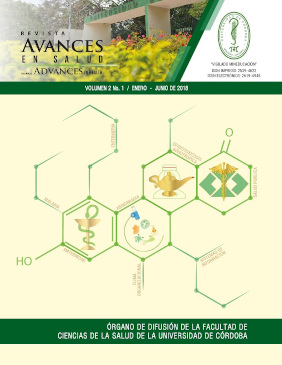Obstacles and challenges for the development of information systems in the health sector
Obstáculos y retos para el desarrollo de sistemas de información en el sector salud.
Show authors biography
Objective. The purpose of Information Systems in Health (SIS) is to improve the health of individuals and populations through the appropriate application of knowledge generated by the organization of information in such systems. Materials and methods. A literature review was conducted through the experiences and results obtained in the development and implementation of an SIS. Results. The analysis of the requirements is the starting point for the development or acquisition of any software product. The SIS must consider the inclusion of the necessary data for the investigation and allow for its organization depending on the type of inquiry that will be carried out. It must simplify and accelerate access to critical information while controlling access to data, facilitate the statistical processing of large amounts of data, and finally facilitate the exchange of data between different systems. Conclusions. The set of obstacles and challenges for the development of the SIS listed in this article confirms the high complexity of this type of information systems for which mature and detailed planning is needed.
Article visits 2888 | PDF visits
Downloads
- Rodríguez RJ, Gattini C, Almeida G. El establecimiento de Sistemas de información en servicios de atención de la salud: Guía para el análisis de requisitos, especificación de las aplicaciones y adquisición. Pan American Health Organization. Washington, DC: PAHO, 1999.
- Llanusa RS, et al. Las tecnologías de información y comunicación y la gestión del conocimiento en el sector salud. Revista Cubana de la salud Pública, 2005, vol. 31, no 3, p. 223-32.
- Oviedo E, Fernández A. Tecnologías de la información y la comunicación en el sector salud: oportunidades y desafíos para reducir inequidades en América Latina y el Caribe. CEPAL, 2010.
- Pressman R. Ingeniería de Software. Un enfoque práctico. McGraw- Hill, México, 2007.
- Sommervville I. Ingeniería de Software. Pearson Educación, México, 2002.
- Rojas Sola JI, Fernández Sora A, Serrano Tierz A y Hernández Díaz D. Una revisión histórica: desde el dibujo en ingeniería hacia la ingeniería del diseño, Revista Dyna., 78 (167), pp. 17-26, 2011.
- Sunkel G, Trucco D. Nuevas tecnologías de la información y la comunicación para la educación en América Latina: riesgos y oportunidades. CEPAL, 2010.
- Oviedo E, Fernández A. Tecnologías de la información y la comunicación en el sector salud: oportunidades y desafíos para reducir inequidades en América Latina y el Caribe. CEPAL, 2010.
- Mildenberger P, Eichelberg M, Martin E. Introduction to the DICOM standard. European radiology, 2002, vol. 12, no 4, p. 920-927.
- Sideli R. et al. Adopting HL7 as a Standard for the Exchange of Clinical Text Reports. En Proceedings. Symposium on Computer Applications in Medical Care. American Medical Informatics Association, 1990. p. 226-229.
- ASTM International - Standards and Publications https://www.astm.org/Standard/standards-and-publications.html
- WHO ICD-10 online versions http:// www.who.int/classifications/icd/ icdonlineversions/en/
- Elkin PL. et al. Evaluation of the content coverage of SNOMED CT: ability of SNOMED clinical terms to represent clinical problem lists. En Mayo Clinic Proceedings. Elsevier, 2006. p. 741-748.
- Donnelly K. SNOMED-CT: The advanced terminology and coding system for eHealth. Studies in health technology and informatics, 2006, vol. 121, p. 279.
- Mcdonald CJ, et al. LOINC, a universal standard for identifying laboratory observations: a 5-year update. Clinical chemistry, 2003, vol. 49, no 4, p. 624-633.
- Monteagudo PJ. SALVADOR, Carlos Hernández. Estándares para la historia clínica electrónica. Informes SEIS, p. 193, 2002.
- Barrows HS. An overview of the uses of standardized patients for teaching and evaluating clinical skills. AAMC. Academic Medicine, 1993, vol. 68, no 6, p. 443-51.
- ISO – INTERNATIONAL ORGANIZATION FOR STANDARIZATION https://www.iso. org/
- Crowley JR, William F., et al. Clinical research in the United States at a crossroads: proposal for a novel public- private partnership to establish a national clinical research enterprise. Jama, 2004, vol. 291, no 9, p. 1120-1126.
- Frenk J. La salud de la población: Hacia una nueva salud pública. Fondo de Cultura Económica, 2016.
- Hernández LR. Metodología de la investigación en ciencias de la salud. Ecoe Ediciones, 2008.
- Cabieses B, Espinoza MA. La investigación traslacional y su aporte para la toma de decisiones en políticas de la salud. Revista Peruana de Medicina Experimental y Salud Pública, 2011, vol. 28, no 2, p. 288-297.
- Betancourt BJ, Ramis AR, Mirabal NM. Investigación Traslacional y Transdisciplinaria en salud pública. Revista Cubana de la Salud Pública, 2014, vol. 40, no 2, p. 236-245.
- Gómez D, Soto GN. Ilegalidad de la investigación genética en Colombia. Pensamiento Jurídico, 2007, no 18.
- MODELO MEXICANO DE ARBITRAJE MÉDICO - SECRETARÍA DE LA SALUD www.salud.gob.mx/unidades/cdi/ documentos/DOCSAL7339.pdf
- Valdés SR, Molina LJ, Solís TC. Aprender de lo sucedido. Análisis de las quejas presentadas ante la Comisión Nacional de Arbitraje Médico. Salud pública de México, 2001, vol. 43, no 5, p. 444-454.
- INFORMADO, Consentimiento Válidamente. Comisión Nacional de Arbitraje Médico, 1a. Edición, México, DF, 2004, vol. 12.
- Charette R. Análisis y administración del riesgo en Ingeniería de Software, McGraw- Hill, USA, 1989.
- Sánchez MA. “Implicaciones éticas y socioeconómicas de las historias clínicas electrónicas”. Revista Informática Médica. Año 4, No. 10, 2002. www. informaticamedica.org.ar.
- Peña GR. “Uso de la Planificación en el Desarrollo del Expediente Clínico Electrónico”, Tesis de Maestría en Ingeniería, Universidad Nacional de México (UNAM), 2003.







